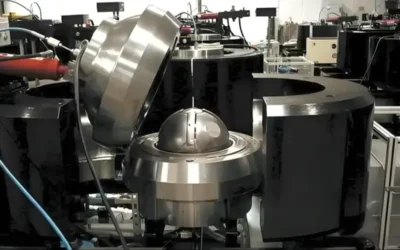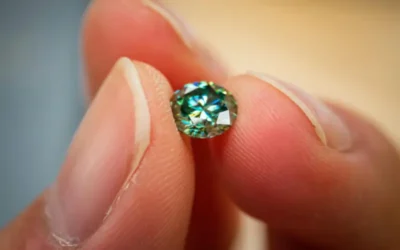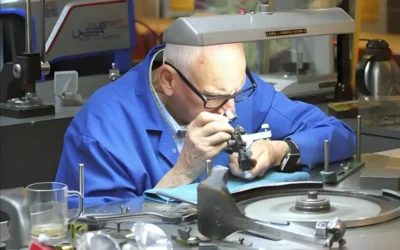Imagine scrolling through your favorite jewelry boutique’s website, your eyes catching the radiant sparkle of a Lab Grown Diamond engagement ring. You pause and think: beyond its brilliant shine and ethical appeal, what does it actually take to bring that diamond to life in a lab?
Energy consumption in Lab Grown Diamond production is more than a technical footnote—it’s a defining factor for environmentally conscious consumers and industry insiders alike. As the demand for sustainable gems soars, understanding the electricity footprint behind these stones helps shoppers make informed choices and encourages producers to innovate toward greener processes.
In this article, we’ll delve into the true “energy facts” of Lab Grown Diamond creation. You’ll discover how the two main production methods—Chemical Vapor Deposition (CVD) and High-Pressure High-Temperature (HPHT)—differ in their power requirements, what drives those differences, and how they stack up against the lifecycle energy of mined diamonds.
We’ll also shine a spotlight on pioneering brands like Glarins, which are setting new benchmarks for energy efficiency, and offer practical tips to help you ask the right questions when shopping for your next sparkling purchase. By the end, you’ll grasp the kilowatt-hour metrics that matter and appreciate the technological advancements and certifications pushing the industry toward a brighter, more sustainable future.
What Are Lab Grown Diamonds?
Understanding Lab Grown Diamond Production
 Lab Grown Diamonds are, at their core, the same crystalline carbon structures as mined diamonds, exhibiting identical chemical, physical, and optical properties. The primary difference lies in their birthplace: instead of forming over millions of years deep within the Earth, these gems are cultivated in cutting-edge laboratory environments. Two leading techniques dominate the field—Chemical Vapor Deposition (CVD) and High-Pressure High-Temperature (HPHT)—each replicating the natural diamond-growing conditions in distinct ways.
Lab Grown Diamonds are, at their core, the same crystalline carbon structures as mined diamonds, exhibiting identical chemical, physical, and optical properties. The primary difference lies in their birthplace: instead of forming over millions of years deep within the Earth, these gems are cultivated in cutting-edge laboratory environments. Two leading techniques dominate the field—Chemical Vapor Deposition (CVD) and High-Pressure High-Temperature (HPHT)—each replicating the natural diamond-growing conditions in distinct ways.
In CVD, a diamond “seed” is placed inside a vacuum chamber filled with a carbon-rich gas blend, typically methane mixed with hydrogen. By introducing energy through microwave-induced plasma or a heated filament, the gases break down and deposit carbon atoms onto the seed, gradually assembling a diamond layer by layer. Temperatures in the chamber are carefully controlled between 800 °C and 1,200 °C under low pressure, and the process may take anywhere from several days to weeks to yield a one-carat stone.
HPHT, by contrast, compresses a seed diamond under immense pressure—often exceeding five gigapascals—while heating it to temperatures north of 1,300 °C. This approach mimics the Earth’s mantle conditions, forcing carbon atoms to crystallize directly around the seed in a matter of hours. Complex hydraulic presses generate the requisite pressures, and high-performance heaters maintain stable temperatures throughout each cycle.
Although both methods achieve the same end result—a gem-quality diamond—their growth environments and machinery lead to different energy consumption profiles. For consumers, knowing whether a retailer’s Lab Grown Diamonds emerged from a CVD reactor or an HPHT press isn’t always straightforward, but understanding these production pathways helps explain why energy metrics can vary significantly among producers.
Chemical Vapor Deposition (CVD): Basics & Energy Profile
Chemical Vapor Deposition stands out for its gradual, layer-by-layer growth, which affords exceptional control over diamond purity and crystal orientation. As carbon-rich gas molecules are energized into plasma, carbon atoms settle onto the seed, building a perfect lattice over time. Maintaining the plasma and chamber conditions demands a steady flow of electricity: heating elements keep the interior at high temperatures, vacuum pumps sustain low-pressure conditions, and gas delivery systems meter precise gas ratios.
Modern CVD reactors typically consume between 500 and 2,000 kilowatt-hours (kWh) of electricity per carat of diamond produced. Advances in reactor design—such as improved vacuum seals, optimized gas flow dynamics, and microwave plasma uniformity—have steadily lowered that figure. Leading-edge facilities today aim to bring energy use below 1,000 kWh per carat without sacrificing gem quality, demonstrating how targeted engineering tweaks can drive meaningful efficiency gains.
High-Pressure High-Temperature (HPHT): Basics & Energy Profile
High-Pressure High-Temperature production harnesses brute-force conditions to accelerate diamond growth. During each HPHT cycle, hydraulic systems crank up pressures to roughly 5–6 GPa while heaters push temperatures past 1,300 °C, all of which translates into substantial power demands. Because the crystallization phase completes in mere hours, energy consumption spikes sharply during pressurization and heating, then tapers off once the diamond forms.
Across the industry, HPHT operations generally register between 800 and 2,500 kWh per carat. Variations hinge on press size, cycle duration, and the presence of energy-recovery mechanisms. Some forward-thinking HPHT producers now integrate heat exchangers to capture waste heat from the press and reuse it for preheating gas feeds or chamber components, nudging energy use downward and improving overall process economics.
Measuring Energy Consumption in Lab Grown Diamond Production
How Energy Consumption Is Calculated
When a Lab Grown Diamond manufacturer quotes an energy-per-carat figure, they’re normalizing their total electricity draw against the weight of stones produced. The calculation typically encompasses three main phases: the crystal growth itself, the purification or catalyst removal step, and the post-growth cutting and polishing.
During the growth phase, the reactor’s heaters or pressurs demand the lion’s share of power; in CVD, that means running filament or plasma generators continuously, while in HPHT it means cycling hydraulic presses and high-temperature furnaces.
Once high-quality crystals emerge, additional energy is expended in removing excess catalysts—metal alloys used in some HPHT setups—or etching away unwanted graphite layers in CVD processes. Finally, lasers, saws, and polishing wheels transform rough crystals into market-ready gems, consuming further kilowatt-hours.
A comprehensive figure even factors in ancillary power needs: lighting, climate control to maintain clean-room standards, and general facility operations. By tracking both diamond-specific and total facility energy, producers can pinpoint inefficiencies and chart a path toward improved energy management.
Typical Energy Ranges for CVD vs. HPHT
While specific numbers vary by facility age and scale, the industry follows a rough heuristic: CVD reactors require between 500 and 2,000 kWh per carat, whereas HPHT presses range from 800 to 2,500 kWh per carat. This overlap occurs because newer HPHT systems with heat-recovery designs can approach the efficiency of older CVD setups. Conversely, legacy CVD chambers without optimized insulation or plasma uniformity may consume closer to the upper end of their range.
Factors Influencing Energy Use
Several variables influence the final kWh-per-carat metric. First, the choice between batch and continuous processes plays a role: CVD’s ability to run continuous, high-throughput reactions tends to lower per-carat energy compared to HPHT’s discrete press cycles, which incur downtime between runs for press reset and tooling changes. Equipment vintage also matters—older reactors and presses lose thermal efficiency over time, while well-maintained, modern units preserve peak performance.
Stone size and quality targets further shape energy consumption: cultivating large, high-clarity diamonds demands longer growth periods and more power, whereas small industrial-grade diamonds can be produced more quickly and cheaply. Finally, the degree to which a facility integrates renewable energy—by purchasing wind or solar power or installing on-site photovoltaic arrays—can effectively decarbonize their kWh tally, even if grid-sourced electricity remains the same.
Lab Grown vs. Mined Diamonds: A Comparative Energy Analysis
 Energy Consumption of Mined Diamonds
Energy Consumption of Mined Diamonds
Mined diamonds traverse a far different path. Excavation alone involves heavy machinery, diesel trucks, and ore processing plants, all of which guzzle fuel and electricity to unearth kimberlite deposits. After the raw ore arrives at processing facilities, a combination of crushing, washing, and advanced sorting technologies isolates rough diamonds from waste rock. Once retrieved, these rough stones embark on a global journey—trucked or flown to cutting centers, polished by skilled artisans, and then shipped to retailers worldwide.
Industry assessments suggest that mining and initial processing consume roughly 150 to 500 kWh per carat, depending on the mine’s scale, location, and mechanization level. When factoring in transport emissions and the energy used in cutting and polishing—similar to Lab Grown Diamond facilities—the total lifecycle energy footprint for a mined diamond can exceed 1,000 kWh per carat. Remote mines often rely on diesel generators for power, adding significant indirect energy and carbon costs.
Lab Grown Diamond Production: Is It More Energy-Efficient?
At first glance, Lab Grown Diamond production appears to use more direct electricity than mining’s excavation stage. However, this comparison overlooks mining’s broader lifecycle impacts, including land disturbance, diesel fuel consumption, and long-haul transportation. Lab Grown Diamonds eliminate most of those indirect costs. Moreover, manufacturers can pinpoint every kilowatt-hour consumed in the lab, applying process controls and data analytics to continually refine efficiency. Mines, by contrast, struggle to isolate diamond-specific energy usage from overall earth-moving operations.
By integrating renewable electricity and advanced reactor designs, leading Lab Grown Diamond producers can reduce their effective grid emissions even further. The result is an overall greenhouse gas and energy footprint that, on a “cradle-to-gate” basis, is typically 40 to 60 percent lower than that of an equivalent mined diamond, making lab-grown gems a compelling choice for eco-conscious consumers.
Lifecycle Assessment (LCA) Findings
Independent lifecycle assessments affirm these benefits, emphasizing that while Lab Grown Diamond facilities may draw more megawatt-hours directly, their streamlined supply chain and clean energy integration more than offset those demands. As grid decarbonization accelerates—particularly in regions powered by wind, solar, and hydroelectric sources—the environmental advantage of Lab Grown Diamond production is only expected to grow.
Sustainability Spotlight: Glarins’ Approach to Energy Efficiency
Case Study – Glarins Lab Grown Diamonds
Glarins, a trailblazer in transparent gem production, exemplifies how data-driven energy management can transform an industry. At their Ontario facility, every reactor and press is metered individually, and quarterly reports disclose average kilowatt-hours per carat for both CVD and HPHT lines. By publishing these figures, Glarins not only holds itself accountable but also invites consumer scrutiny, fostering trust and setting a performance benchmark for competitors.
Results: kWh per Carat Improvements Over Time
Since launching their transparency initiative in early 2022, Glarins has slashed its average energy consumption from approximately 1,800 kWh per carat to just under 1,200 kWh per carat. Key strategies included replacing decade-old CVD reactors with next-generation units featuring improved plasma uniformity, integrating heat-recovery systems on HPHT presses to capture waste heat for preheating feed gases, and deploying AI-driven process controls that adjust temperature and gas flow in real time to eliminate energy wastage.
Certifications & Transparency for Consumers
Glarins’ commitment extends beyond raw numbers. Their Ontario plant holds ISO 50001 certification, demonstrating adherence to international energy management standards, while all Glarins Lab Grown Diamonds carry CarbonNeutral® status, confirming that residual emissions are offset through verified climate projects. For shoppers, these certifications translate into confidence that each stone they purchase supports an operation dedicated to continuous energy optimization and renewable sourcing.
Innovations & Best Practices to Reduce Energy Consumption
Emerging Technologies in Lab Grown Diamond Production
The race toward greater energy efficiency has spurred a wave of technological breakthroughs. Modular CVD reactors now allow producers to scale capacity incrementally, avoiding the massive power spikes associated with oversized chambers. Pulsed-plasma techniques deliver carbon radicals more efficiently to the diamond seed, reducing total growth time and power draw. Advanced cooling systems recycle refrigeration energy to maintain optimal chamber temperatures without the need for constant new input.
Operational Strategies for Lower Energy Use
Beyond capital investments in hardware, savvy operational strategies yield substantial energy savings. Scheduling growth runs to minimize idle reactor time prevents needless energy draw when no diamond formation occurs. Rigorous preventive maintenance keeps vacuum pumps, heaters, and gas lines functioning at peak efficiency, reducing hidden thermal losses. Real-time energy-monitoring dashboards alert operators to anomalies—such as a misaligned gas valve or a temperature drift—that could otherwise spike consumption.
Partnerships & Industry Initiatives
Recognizing that collective action accelerates progress, many Lab Grown Diamond producers participate in industry alliances like the Diamond Producers’ Energy Alliance. By pooling benchmarking data and sharing best practices, both large and small players gain insights into which process adjustments deliver the greatest efficiency uplift. This collaborative model benefits consumers by driving down production costs and environmental impacts across the board.
What Consumers Can Do: Making Energy-Wise Diamond Purchases
Asking the Right Questions
As a discerning shopper, you can steer the market toward sustainability simply by asking retailers for their energy metrics. Inquire about average kilowatt-hours per carat: a lower figure indicates a more efficient process. Ask whether the producer sources renewable electricity—whether through direct contracts with wind or solar farms, green power credits, or on-site solar panels. And don’t hesitate to request proof of ISO 50001 certification or CarbonNeutral® accreditation, which confirm formal, third-party validation of energy and carbon management practices.
Reading Certifications & Labels
When browsing Lab Grown Diamond collections, look for credible badges and labels. CarbonNeutral® status signifies that any remaining emissions are offset through certified climate projects. ISO 14001 and ISO 50001 certifications demonstrate that environmental and energy management systems are in place and subject to regular audits. Membership in the Responsible Jewellery Council further reinforces a brand’s commitment to ethical production and supply-chain oversight.
Empowering Transparency at Glarins
Glarins makes energy transparency effortless: every product page displays an Energy Transparency Badge, revealing real-time average kilowatt-hours per carat alongside the proportion of renewable energy used. This straightforward visual cue empowers you to align your purchase with your environmental values, ensuring that your next Lab Grown Diamond not only dazzles on the finger but also leaves a lighter footprint on the planet.
Future Outlook: Energy Trends in Lab Grown Diamond Production
Looking ahead, industry experts forecast that average energy consumption for Lab Grown Diamonds will dip below 800 kWh per carat by 2030. Green hydrogen—produced via renewable-powered electrolysis—could replace fossil-derived gases in high-temperature processes, offering a carbon-free heat source. As national grids continue their shift toward renewable generation, even “standard” grid electricity will become significantly cleaner, further boosting the lab-grown advantage. Meanwhile, AI-driven optimization and predictive maintenance will squeeze out remaining inefficiencies, driving the next wave of energy savings.
Conclusion
 Energy consumption lies at the heart of the Lab Grown Diamond value proposition. By unpacking the electricity demands of CVD and HPHT methods, comparing them with the lifecycle footprint of mined gems, and highlighting real-world data from pioneers like Glarins, we see that lab-grown stones offer a pathway to high-quality diamonds with a substantially lower environmental impact. Certifications such as ISO 50001 and CarbonNeutral® provide further assurance that leading producers are committed to continuous improvement.
Energy consumption lies at the heart of the Lab Grown Diamond value proposition. By unpacking the electricity demands of CVD and HPHT methods, comparing them with the lifecycle footprint of mined gems, and highlighting real-world data from pioneers like Glarins, we see that lab-grown stones offer a pathway to high-quality diamonds with a substantially lower environmental impact. Certifications such as ISO 50001 and CarbonNeutral® provide further assurance that leading producers are committed to continuous improvement.
As a diamond aficionado and ethical consumer, your curiosity and questions can catalyze further progress, driving producers to innovate and adopt greener practices. With every Lab Grown Diamond you choose—backed by transparent energy metrics—you champion an industry where brilliance and sustainability go hand in hand.
FAQs
1. How much energy does it take to grow one carat of diamond?
Most Lab Grown Diamond producers report an average range of 500–2,500 kWh per carat, with CVD processes tending toward the lower end and HPHT toward the higher end, depending on equipment and process optimizations.
2. Are Lab Grown Diamonds always more energy-efficient than mined?
While Lab Grown Diamond facilities may draw more direct electricity per carat than mining’s excavation phase, their streamlined supply chain, absence of diesel-powered earth moving, and ability to integrate renewables yield a 40–60% lower overall lifecycle energy and carbon footprint compared to mined diamonds.
3. What renewable energy options exist for diamond producers?
Producers commonly partner with wind and solar farms, purchase renewable energy credits, or install on-site solar panels and battery storage systems to offset or directly power their CVD reactors and HPHT presses.
4. Can I verify a producer’s energy claims?
Yes—look for ISO 50001 certification for energy management systems, CarbonNeutral® accreditation, and published kWh-per-carat metrics on the producer’s website or product pages.
5. What innovations will reduce energy use further?
Emerging breakthroughs such as green hydrogen fuel, AI-driven reactor controls, pulsed-plasma deposition, and advanced heat-recovery systems are poised to drive average energy consumption below 800 kWh per carat by 2030.






